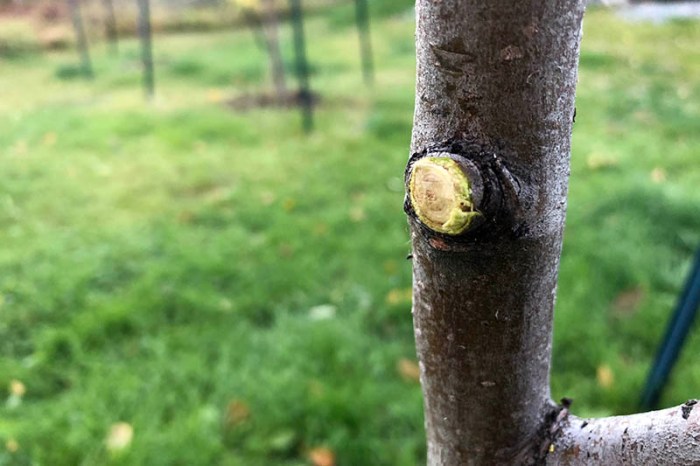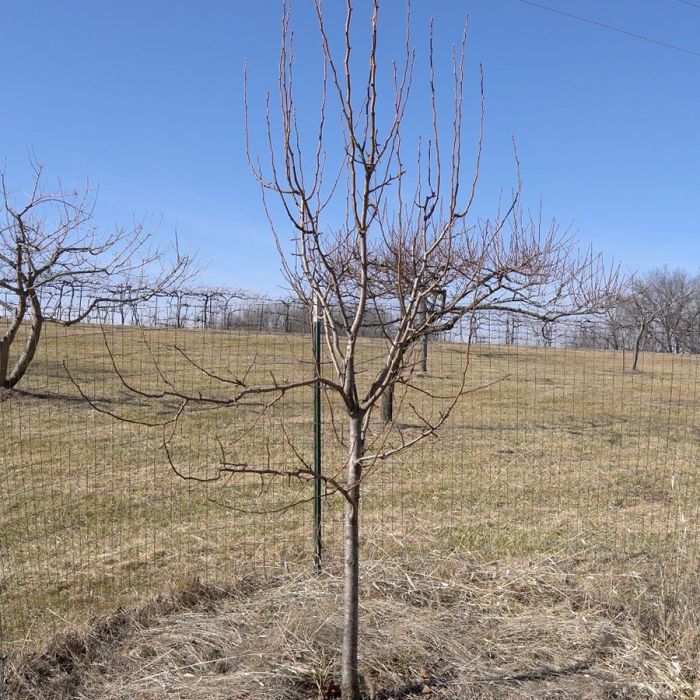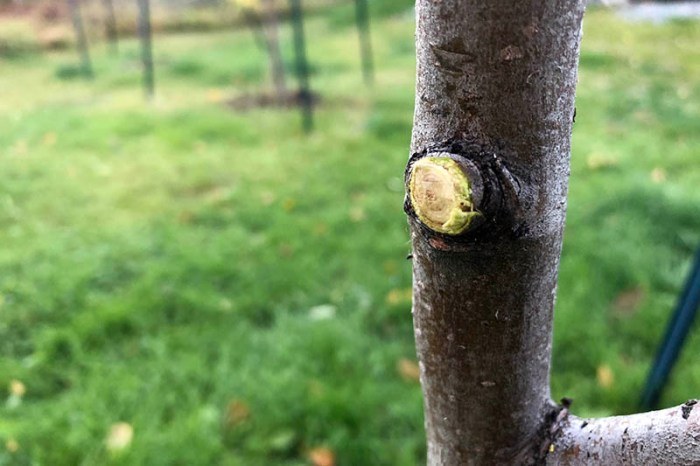Expert Mix Compost with Soil is the key to unlocking vibrant, thriving gardens. This unique blend combines the best of compost and soil, offering superior drainage, aeration, and nutrient content compared to traditional soil. Discover how this expert mix can transform your planting experience, boosting plant growth and overall garden success.
From understanding the various components and types of expert mixes to mastering the preparation and application techniques, this guide provides a comprehensive overview. We’ll delve into the benefits, potential problems, and sustainable practices associated with expert mix compost, ensuring you have the knowledge to cultivate a flourishing garden.
Introduction to Expert Mix Compost with Soil

Expert Mix Compost with Soil is a specially formulated growing medium designed to provide optimal conditions for plant growth. It combines the benefits of compost, which enriches the soil with nutrients and improves its structure, with a carefully selected blend of soil components. This unique mix offers superior drainage, aeration, and water retention compared to standard garden soil, fostering healthier root development and robust plant growth.This specially crafted mix is a significant improvement over conventional soil, as it’s carefully balanced to meet the specific needs of various plant types.
Understanding the components and types of Expert Mix Compost with Soil is key to selecting the ideal mix for your gardening projects.
Key Components and Ingredients
Expert Mix Compost with Soil typically comprises a blend of composted organic matter, such as well-decomposed manure, leaves, and food scraps. Other crucial ingredients include peat moss, perlite, vermiculite, and sometimes, sand. These additions contribute to improved drainage, aeration, and water retention, crucial for robust root development and healthy plant growth. The exact ratios of these components vary depending on the specific formula and intended use.
Types of Expert Mix Compost with Soil
Different plant types have varying needs. Consequently, there are various formulations of Expert Mix Compost with Soil tailored for specific applications. For instance, a mix for vegetables might have a higher concentration of nutrient-rich compost, while a mix for flowers might include more peat moss for moisture retention. Commercial brands often offer specific mixes labelled for vegetables, herbs, flowers, or general use.
Expert Mix Compost with soil is a game-changer for plant health, but managing hunger during a fast can be equally crucial. For example, understanding how to effectively combine the compost with soil to create a rich, nutrient-dense mix can yield amazing results, just like mastering techniques to avoid hunger pangs while fasting, as outlined in this guide Avoid Hunger While Fasting.
Ultimately, both processes require careful consideration and the right strategies to achieve optimal outcomes, making your plants and you feel fantastic.
Benefits of Expert Mix Compost with Soil
Using Expert Mix Compost with Soil provides several advantages over conventional soil. Improved drainage and aeration are crucial for healthy root development. The enhanced water retention capabilities help maintain consistent moisture levels, reducing the need for frequent watering. Moreover, the rich nutrient content derived from the compost provides essential elements for vigorous plant growth and development, leading to healthier, more productive plants.
The controlled environment of this soil blend facilitates a more stable environment for the growth of plants.
Comparison of Expert Mix Compost with Soil and Regular Soil
| Characteristic | Expert Mix Compost with Soil | Regular Soil |
|---|---|---|
| Drainage | Excellent, promoting healthy root development and preventing waterlogging. | Variable, prone to waterlogging in some cases, hindering proper root growth. |
| Aeration | Improved aeration allows for better oxygen supply to roots, supporting vigorous growth. | Can be poor, leading to oxygen deprivation and reduced root health. |
| Water Retention | Balanced water retention, preventing both dryness and waterlogging. | Variable water retention, sometimes leading to excessive dryness or waterlogging. |
| Nutrient Content | High nutrient content from compost, reducing the need for supplemental fertilizers. | Variable nutrient content, often requiring supplemental fertilizers to meet plant needs. |
| pH Level | Usually balanced to the optimal range for most plants. | Variable pH level, potentially affecting plant health and growth. |
| Use | Ideal for a wide range of plants, including vegetables, flowers, and herbs. | Suitable for some plants but often needs amendments for optimal growth. |
Benefits and Advantages of Using Expert Mix Compost with Soil
Expert Mix Compost with Soil offers a superior growing medium compared to traditional soil alone. Its unique blend of composted materials enhances various aspects of plant health and garden success, leading to more robust and thriving plants. This enhanced growing medium significantly contributes to the overall health and productivity of the garden.
Improved Drainage Properties
The carefully selected components in Expert Mix Compost with Soil contribute to excellent drainage. This is crucial for preventing waterlogging, a common issue in heavy clay soils that can lead to root rot and other fungal diseases. The porous structure allows excess water to drain away quickly, keeping the roots healthy and promoting overall plant vigor. This drainage capability is particularly beneficial in areas prone to heavy rainfall or irrigation.
A well-draining medium allows oxygen to reach the roots, preventing them from suffocating.
Enhanced Aeration and Water Retention Capabilities
Expert Mix Compost with Soil effectively balances aeration and water retention. The porous nature of the compost provides ample space for air circulation, crucial for healthy root development. Simultaneously, the compost’s organic structure retains moisture effectively, reducing the need for frequent watering. This optimized water retention capability is particularly beneficial in dry climates or during periods of drought, ensuring consistent moisture availability for the plants.
This balance is essential for promoting healthy growth and reducing the risk of water stress.
Increased Nutrient Content and Availability
Expert Mix Compost with Soil is rich in essential nutrients. The composting process breaks down organic matter into readily available forms that plants can easily absorb. This leads to a significant increase in the nutrient content of the soil, which is vital for robust plant growth and development. The slow-release nature of the nutrients ensures a consistent supply throughout the growing season, minimizing the need for frequent fertilizer applications.
This also helps to maintain a healthy soil ecosystem by providing food for beneficial microbes.
Promoting Healthier Plant Growth and Development
The enhanced growing medium fostered by Expert Mix Compost with Soil leads to healthier plant growth and development. The improved aeration, drainage, and nutrient availability create an ideal environment for root development and nutrient uptake. This translates into stronger, more resilient plants that are better equipped to withstand environmental stresses like drought or pests. Plants grown in this enriched medium exhibit improved vigor, faster growth rates, and increased yield.
Examples of Garden Success with Expert Mix Compost with Soil
Numerous gardeners have reported significant improvements in their gardens by using Expert Mix Compost with Soil. For example, tomatoes grown in this mix have exhibited larger fruit sizes and increased yields. Similarly, leafy greens like lettuce and spinach have displayed healthier growth and vibrant colors. These examples highlight the positive impact of the Expert Mix Compost with Soil on various types of plants, demonstrating its overall effectiveness in enhancing garden success.
The improvement in plant health and growth is readily noticeable and demonstrably better than using traditional soil alone.
Composition and Preparation of Expert Mix Compost with Soil

Crafting the perfect Expert Mix Compost with Soil involves carefully selecting and blending various components. This blend, when properly prepared, provides an ideal growing medium for a wide range of plants, supporting healthy root development and overall plant vigor. Understanding the composition and preparation process is key to achieving optimal results.The precise mix of soil types and organic matter is crucial for creating a balanced and fertile growing environment.
Careful attention to the proportions of each component ensures the compost provides the necessary nutrients and structure for healthy plant growth.
Common Soil Types, Expert Mix Compost with Soil
Understanding the properties of different soil types is fundamental to creating an effective Expert Mix Compost. Various soil types offer distinct benefits, impacting the final product’s texture and water retention capacity. Different soils will drain and hold moisture differently, impacting plant growth.
- Loam: A balanced blend of sand, silt, and clay, loam boasts excellent water retention and aeration, making it an ideal base for many Expert Mix Composts.
- Sandy Soil: Sandy soil, rich in sand particles, drains quickly and offers excellent aeration. Its primary role in a mix is to improve drainage and prevent waterlogging, a common issue in heavier soil types.
- Clay Soil: Clay soil, with its abundance of clay particles, retains water exceptionally well. Adding clay to a mix can improve water retention, but must be balanced with other components to prevent waterlogging.
Organic Matter Additions
A wide range of organic matter enriches the Expert Mix Compost with vital nutrients and beneficial microbes. Incorporating these materials improves soil structure, aeration, and water retention. The breakdown of organic matter releases essential nutrients, benefiting the plants.
- Compost: Well-decomposed compost is a cornerstone of Expert Mix Compost, providing essential nutrients and improving soil structure. It adds valuable organic matter to the mix, promoting beneficial microbial activity.
- Manure: Manure, such as cow or horse manure, adds substantial nutrients to the mix, enhancing the compost’s fertility. Ensure the manure is well-rotted to prevent potential issues.
- Leaf Mold: Leaf mold, composed of decomposed leaves, enriches the soil with organic matter and improves its structure. Its presence enhances water retention and drainage.
- Peat Moss: Peat moss is a common addition, known for its ability to retain water. Incorporating peat moss in the mix improves moisture retention and reduces the risk of drought.
Mixing the Components
Properly mixing the components is crucial for creating a homogeneous and well-aerated Expert Mix Compost. Thorough mixing ensures an even distribution of nutrients and beneficial microbes throughout the medium. Mixing the ingredients together ensures even distribution of components, which promotes even plant growth.
- Combine the chosen soil types in a large container.
- Gradually add the organic matter, stirring gently to prevent clumps. Careful stirring is important to avoid creating air pockets, which can affect the quality of the mix.
- Continue mixing until a uniform mixture is achieved. A uniform mixture ensures the soil and organic matter are well-integrated, providing consistent support for plant growth.
Step-by-Step Guide
This structured approach ensures a consistently high-quality Expert Mix Compost. Consistency in the preparation process is key to creating a reliable growing medium.
- Gather Materials: Collect the chosen soil types and organic matter components in appropriate quantities.
- Combine Soils: Place the chosen soil types in a large container.
- Add Organic Matter: Gradually add the organic matter components to the container, stirring gently to prevent clumps.
- Mix Thoroughly: Continue mixing until a uniform mixture is achieved.
- Check Consistency: Ensure the compost is consistent in texture and appearance. A consistent texture helps in determining the quality of the mix.
- Store Properly: Store the Expert Mix Compost in a sealed container to maintain its quality.
Typical Recipe Proportions
The following table Artikels a typical recipe for Expert Mix Compost with Soil, showcasing the proportions of each component. Adjusting these proportions based on specific plant needs and soil conditions is highly recommended.
| Component | Proportion (Approximate) |
|---|---|
| Loam | 50% |
| Compost | 30% |
| Peat Moss | 15% |
| Manure | 5% |
Application and Usage of Expert Mix Compost with Soil
Expert Mix Compost with Soil, a blend of meticulously prepared compost and soil, offers a powerful tool for enhancing plant growth and soil health. Proper application is key to unlocking its full potential. This section delves into practical application methods, addressing specific needs for different planting scenarios and long-term soil health maintenance.Applying Expert Mix Compost with Soil is a straightforward process, but understanding the nuances for various situations will maximize its effectiveness.
This section details the optimal application techniques for different gardening contexts, from amending existing soil to preparing new planting beds.
Amending Existing Soil
To improve the structure and fertility of existing soil, incorporate Expert Mix Compost with Soil gradually. Avoid overwhelming the soil with a large amount at once. A good approach is to mix it into the top 6-8 inches of soil, ensuring even distribution. This method allows beneficial microbes and nutrients to slowly integrate into the existing soil ecosystem.
For heavy clay soils, adding compost will improve drainage and aeration. For sandy soils, it will increase water retention and nutrient availability.
Expert mix compost with soil is amazing for boosting plant growth, but sometimes, figuring out the right blend can be tricky. Just like finding the perfect mix for your garden, understanding if a Virgo man likes you takes a bit of observation. Check out this helpful guide to see if he’s into you: Tell if a Virgo Man Likes You.
Ultimately, though, the best compost recipe is one that works for you and your plants – experiment and learn!
Planting Scenarios
Proper application methods vary based on the planting scenario. For container gardening, mix Expert Mix Compost with Soil directly into the container, filling it to the desired depth. For in-ground planting, dig a hole slightly larger than the root ball of the plant. Carefully mix Expert Mix Compost with Soil into the existing soil, ensuring adequate space around the roots for growth.
For newly established gardens, Expert Mix Compost with Soil provides an excellent foundation, enhancing the initial growth phase and building soil health for years to come.
Maintaining Compost Quality
Maintaining the quality and structure of Expert Mix Compost with Soil is crucial for sustained performance. Regular moisture management is essential. Avoid overwatering, which can lead to compaction. If the compost becomes too dry, add water gradually to maintain a consistently moist but not soggy condition. Avoid direct exposure to prolonged sunlight, as this can diminish the beneficial microbes within the compost.
Storing it in a covered area helps maintain its quality and nutrient content.
Depth and Spacing
When incorporating Expert Mix Compost with Soil, maintain a proper depth to ensure optimal plant growth. For most plants, a depth of 4-6 inches is ideal. This depth allows roots to access nutrients and moisture effectively. Spacing depends on the plant type. Follow the spacing guidelines for the specific plant species you’re planting to ensure healthy growth and prevent overcrowding.
Plant Type Compatibility
The table below Artikels various plant types that benefit from the use of Expert Mix Compost with Soil. Note that the specific benefits might vary depending on the local soil conditions and plant varieties.
| Plant Type | Benefits from Expert Mix Compost |
|---|---|
| Vegetables (e.g., tomatoes, peppers, cucumbers) | Improved nutrient availability, enhanced root development, increased yield |
| Flowers (e.g., roses, petunias, zinnias) | Improved drainage, enhanced soil aeration, vibrant blooms |
| Herbs (e.g., basil, mint, rosemary) | Sustained nutrient supply, promotes healthy growth and flavor |
| Fruit Trees (e.g., apple, pear, cherry) | Enhanced soil structure, improved water retention, supports healthy root systems |
| Lawns | Improved soil structure, enhanced water retention, healthy grass growth |
Troubleshooting and Common Problems with Expert Mix Compost with Soil
Expert Mix Compost with Soil offers a fantastically versatile growing medium, but like any complex blend, it’s not immune to issues. Understanding potential problems and their solutions is key to maximizing its effectiveness. This section will delve into common pitfalls and provide actionable strategies for troubleshooting your Expert Mix Compost with Soil.Troubleshooting involves recognizing deviations from the expected performance of the growing medium and addressing them.
By understanding the factors affecting drainage, aeration, and nutrient content, you can identify and resolve problems quickly, ultimately ensuring optimal plant growth.
Potential Problems with Drainage
Poor drainage in the Expert Mix Compost with Soil can lead to waterlogging, suffocating roots and promoting disease. Understanding the causes and implementing appropriate solutions is crucial.
- Excessive Water Retention: If your Expert Mix Compost with Soil retains water for extended periods, it could be due to an insufficient amount of coarse materials like perlite or vermiculite. Overwatering can also exacerbate this issue. To remedy this, increase the proportion of these materials, ensuring good drainage, or adjust your watering schedule to avoid waterlogging.
- Compaction: Over time, the Expert Mix Compost with Soil can become compacted, hindering water movement. This is particularly true if the soil is not well-mixed or if the compost is heavily trafficked. Amend the mix by incorporating more coarse materials or using a garden fork to break up compacted areas.
Issues with Aeration
Adequate aeration is essential for healthy root development. Insufficient aeration can result in root rot and stunted growth.
- Dense Texture: If the Expert Mix Compost with Soil feels dense and heavy, it lacks sufficient air pockets. This is often due to inadequate mixing or a high proportion of fine materials. Adding perlite or vermiculite will improve aeration by creating spaces for air circulation.
- Poorly Decomposed Compost: If the compost component of your mix isn’t fully decomposed, it may still contain large particles that hinder aeration. Allow the compost to fully decompose before incorporating it into the Expert Mix Compost with Soil, or consider using a pre-composted product for improved aeration.
Nutrient Content Discrepancies
Maintaining the right balance of nutrients is crucial for plant health.
- Nutrient Depletion: Plants grown in the Expert Mix Compost with Soil may experience nutrient deficiencies over time. A regular soil test can reveal deficiencies and guide the addition of specific amendments to address these issues. For example, adding aged manure or bone meal can replenish nitrogen and phosphorus.
- Imbalances: An excess of one nutrient can lead to deficiencies in others. For instance, an overabundance of nitrogen can hinder the uptake of other essential elements. Careful monitoring and adjusting the compost composition to suit the plant’s needs can prevent imbalances.
Adjusting Expert Mix Compost for Plant Needs
Different plants have varying nutrient requirements.
- Plant Specific Requirements: Certain plants thrive in specific conditions. If your plants aren’t performing well, consider whether the Expert Mix Compost with Soil you’re using is appropriate for their needs. Conducting research on the specific requirements of the plants you’re growing can help you adjust the compost mix accordingly. For example, acid-loving plants might benefit from adding peat moss or sulfur.
Addressing Compaction
Over time, the Expert Mix Compost with Soil may become compacted.
- Amendments for Compaction: If the Expert Mix Compost with Soil feels dense or compacted, incorporating more coarse materials like perlite or vermiculite can improve drainage and aeration. You can also add organic matter like aged manure to improve soil structure and prevent future compaction. Using a garden fork or pitchfork to break up compacted areas is another option.
Mixing expert compost with soil is crucial for healthy plant growth, but I’ve been thinking about how complex emotional struggles, like the ones explored in the recent Star Trek Discovery fall finale, star trek discovery fall finale explores ptsd in a huge way , can mirror the intricate balance needed in creating a thriving garden. Ultimately, understanding both the physical and emotional components of growth is key, much like the right blend of compost and soil leads to a flourishing garden.
Environmental Considerations and Sustainability
Expert Mix Compost with Soil isn’t just about a better garden; it’s about a more sustainable future. By embracing this innovative composting method, gardeners can contribute to a healthier environment while enjoying the fruits (and vegetables!) of their labor. This approach fosters a positive feedback loop, creating fertile soil, reducing waste, and minimizing the environmental impact of traditional gardening practices.
Environmental Benefits of Expert Mix Compost
Expert Mix Compost with Soil offers significant environmental advantages over conventional soil amendments. It reduces the need for synthetic fertilizers and pesticides, minimizing environmental pollution. The decomposition process in Expert Mix Compost naturally enriches the soil, leading to a more robust and resilient ecosystem. This process fosters healthy plant growth, reducing the reliance on chemical interventions.
Role in Reducing Waste and Promoting Sustainable Gardening
Expert Mix Compost with Soil plays a crucial role in waste reduction. By transforming organic materials into a valuable soil amendment, it prevents these materials from ending up in landfills. This significantly reduces greenhouse gas emissions, a key concern in modern environmental discourse. This method promotes closed-loop systems in gardening, mirroring the principles of circular economy. Composting organic materials like food scraps, yard waste, and paper reduces the need for virgin resources and lowers the environmental burden of traditional agriculture.
Impact on Soil Health and Ecosystem Balance
Expert Mix Compost with Soil significantly improves soil health. The rich, nutrient-filled compost enhances soil structure, improving water retention and aeration. This improved soil health supports a vibrant and balanced ecosystem. Beneficial microorganisms thrive in the nutrient-rich soil, contributing to overall soil fertility. This approach fosters a healthier soil ecosystem, reducing the reliance on synthetic inputs.
Sustainable Gardening Practices Involving Expert Mix Compost
Implementing Expert Mix Compost with Soil seamlessly integrates into numerous sustainable gardening practices. For instance, gardeners can incorporate kitchen scraps, coffee grounds, and tea bags into their compost, minimizing food waste. This approach not only improves soil quality but also reduces landfill waste. Furthermore, using Expert Mix Compost allows gardeners to create their own soil amendment, cutting down on the environmental footprint associated with commercially produced fertilizers.
Comparison of Soil Amendment Options
| Soil Amendment | Environmental Impact (Reduced Waste, Improved Soil Health, Reduced Chemical Use) | Cost | Availability |
|---|---|---|---|
| Expert Mix Compost with Soil | High – Reduces waste, improves soil health, reduces chemical use. Creates a closed-loop system. | Moderate – Initial investment in materials for composting may be required. | Moderate – readily available materials are used. |
| Synthetic Fertilizers | Low – Contributes to water pollution, soil degradation. | Low | High |
| Commercially Produced Soil Amendments | Moderate – Often rely on fossil fuels for transportation. | Moderate | High |
Expert Mix Compost with Soil fosters a closed-loop system in gardening, reducing reliance on virgin resources and minimizing the environmental impact of traditional agriculture.
Case Studies and Real-World Examples: Expert Mix Compost With Soil
Expert Mix Compost with Soil isn’t just a theoretical concept; it’s a practical solution transforming gardens worldwide. This section delves into real-world applications, showcasing how gardeners are achieving remarkable results with this innovative compost. From urban balconies to sprawling rural plots, the versatility of Expert Mix Compost with Soil is truly impressive.This section provides concrete examples of how Expert Mix Compost with Soil is adapting to different gardening needs and environments.
We will examine how various gardeners are tailoring their use of this compost, highlighting the positive impact it has on plant growth and overall garden health. Visual examples of successful applications will also be presented.
Success Stories from Diverse Gardens
Various gardeners have reported exceptional results using Expert Mix Compost with Soil. These success stories highlight the versatility of this product.
- A community garden in a densely populated urban area used Expert Mix Compost with Soil to cultivate a diverse range of vegetables and herbs. They noticed a significant increase in both yield and the overall health of their plants compared to their previous soil mix. The compost’s excellent drainage properties allowed for optimal root development, resulting in robust and productive plants.
- A suburban gardener with limited space successfully used Expert Mix Compost with Soil to create a thriving vegetable garden on their balcony. The compost’s ability to retain moisture, combined with its nutrient-rich composition, enabled them to grow a bountiful harvest even in the challenging urban environment. The compact nature of the compost was also a significant benefit in their small space.
- A rural homesteader transformed their neglected garden plot into a flourishing orchard using Expert Mix Compost with Soil. The soil’s improvement allowed for rapid root development and increased fruit production in their fruit trees. The compost’s ability to retain moisture was particularly helpful in the drier climate.
Adapting Expert Mix Compost with Soil for Specific Needs
Gardeners have creatively adapted Expert Mix Compost with Soil to address their unique challenges and maximize their results. This flexibility is key to its effectiveness.
- A gardener with clay soil mixed Expert Mix Compost with Soil in a 1:1 ratio with their existing soil. This amendment improved drainage and aeration, resulting in significantly healthier plant growth and fewer issues with root rot.
- A gardener with sandy soil used Expert Mix Compost with Soil as a top dressing to improve the soil’s water retention capacity. This approach proved highly effective in maintaining consistent moisture levels around the roots, supporting healthy plant growth and reducing the need for frequent watering.
Visual Impact on Plant Growth
The use of Expert Mix Compost with Soil often leads to striking visual differences in plant growth. This impact is readily apparent in various gardening environments.
- Increased leaf size and density were observed in numerous gardens utilizing Expert Mix Compost with Soil. This suggests a positive impact on nutrient absorption and overall plant vigor.
- The improved color and vibrancy of foliage are notable. The rich nutrients in the compost provide plants with the necessary elements for healthy growth, resulting in lush, vibrant foliage. This is a clear visual indicator of the compost’s effectiveness.
- Stronger stems and healthier root systems were observed in plants grown in Expert Mix Compost with Soil. This indicates that the compost is fostering robust root development and overall plant structure.
Testimonials from Satisfied Users
“I was skeptical at first, but the difference in my garden is amazing! My tomatoes are the biggest and juiciest I’ve ever grown.”
-Sarah M., Urban Gardener
“Expert Mix Compost with Soil has completely transformed my neglected garden plot. The fruit trees are thriving, and I’m already seeing a significant increase in yield.”
-John S., Rural Homesteader
“My balcony garden is bursting with life! The compost’s moisture-retention properties are incredible. I’m thrilled with the results.”
-Emily B., Suburban Gardener
Wrap-Up
In conclusion, Expert Mix Compost with Soil offers a powerful solution for achieving exceptional gardening results. By understanding its composition, benefits, and application methods, you can unlock a world of possibilities for your plants. This guide provides a comprehensive resource to help you maximize the potential of this remarkable soil amendment. So, get ready to cultivate your dream garden with expert-level results!




